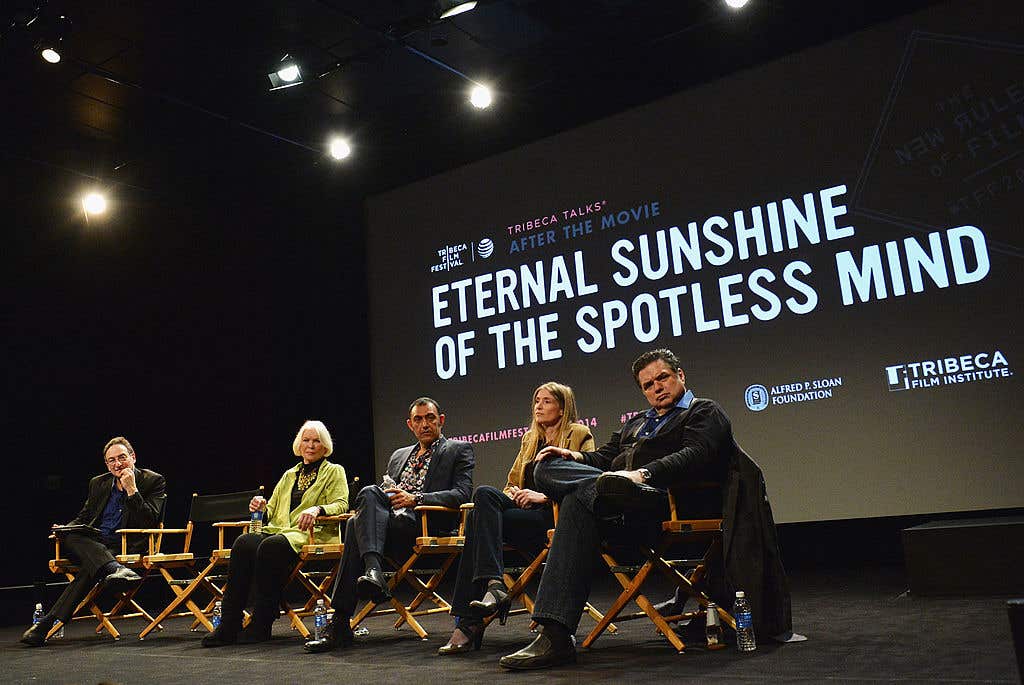‘Eternal Sunshine of the Spotless Mind’ Memory-Erasing Technology is Here
In the movie Eternal Sunshine of the Spotless Mind, Jim Carrey and Kate Winslet’s characters decided to undergo a memory erasure procedure to forget each other after they broke up….

NEW YORK, NY – APRIL 26: (L-R) Moderator Ira Flatlow, actress Ellen Burstyn, professor Karim Nader, professor Daniela Schiller and actor Oliver Platt attend Sloan Retrospective Screening And Panel: “Eternal Sunshine Of The Spotless Mind” during 2014 Tribeca Film Festival at SVA Theater on April 26, 2014 in New York City. (Photo by Slaven Vlasic/Getty Images for the 2014 Tribeca Film Festival)
In the movie Eternal Sunshine of the Spotless Mind, Jim Carrey and Kate Winslet’s characters decided to undergo a memory erasure procedure to forget each other after they broke up. (Understandable given how difficult it is to get over a breakup.) Now, imagine this: if you’re given the opportunity to erase painful memories like in the movie or make it less painful, would you take it? Would you choose to forget the memories that keep you up at night? The failures? The regrets?
It might sound like sci-fi stuff, but the technology for this is not just confined to the movie realm.
Eternal Sunshine of the Spotless Mind Memory-Erasing Technology
Dr. Jonathan Rasouli, a neurosurgeon at Northwell Staten Island University Hospital said in an interview via the New York Post that there are three methods being used on people with depression and PTSD to help “mute” and “dampen” their traumatic memories.
These three methods are:
Transcranial Magnetic Stimulation (TMS): Rasouli likens TMS to “wireless jumper cables” for the brain “but a lot more precise.” It might sound scary but it’s a “noninvasive treatment that uses magnetic fields (like MRI)” that pulses target areas of the brain that are involved in regulating our moods.
The method is not new; however, it is primarily used for “treatment-resistant depression,” but researchers are now exploring its impact on “memory recall, emotional processing, and addiction.”
Deep Brain Stimulation (DBS): A method used to treat Parkinson’s disease, dystonia, epilepsy, OCD, and depression, “DBS can influence emotional memory, reward processing, and even reduce traumatic recall,” according to Rasouli. However, like TMS, using DBS to dampen traumatic memories is still in its early development.
Propranolol Therapy: A beta-blocker medication that’s usually used by those with high blood pressure, researchers are now looking at its potential to “dampen the emotional ‘punch’ of memories.”
Of all the three methods, Rasouli said this is the “closest real-world analog to the Eternal Sunshine concept” but no deleting of memories, just making it less “vivid or depressing.”
Key Takeaway
Life is messy, beautiful, and full of lessons, even the ones that hurt. However, we all deal with pain differently, and if these methods can assist those who need a little help in managing their painful memories without completely forgetting them, then it’s a welcome development.






